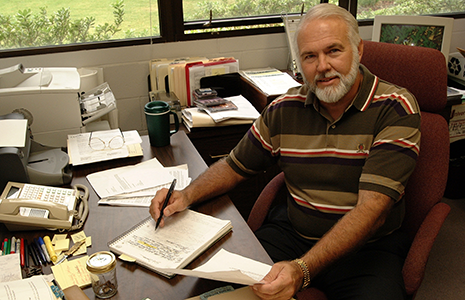Interview with Dr. Norman Leppla, professor at Entomology and Nematology Department of the University of Florida, insects rearing expert
What are the difficulties to face when rearing insects in laboratory?
Recongition of insect rearing as a profession.
The next generation of leaders in the field.
More scientists conducting research on rearing insects.
High quality publications, especially techniques.
Efficient methods, consistent environments, pathology.
Employee training, experience and upward mobility.
Engineering and technology support.
Facilities, equipment and materials developed specifically for rearing insects.
Lack of private sector contract rearing and limited markets for insects and insect products.
Insect rearing in a large scale, for example in the edible insects industry, could be dangerous for human health safety or for the enviroment?
No, insect mass rearing has been proven safe for employees and the environment. Safeguards have been established for assuring worker safety and disposal of waste materials from insect rearing facilities. These safeguards primarily involve monitoring workers for allergies to insects and, for the environment, modern methods of waste disposal.
Can you explain the “Quality Control Concept” in insects rearing programs?
The quality of insects reared in the laboratory must be “built-in” by developing and managing the best possible production system, not by checking the insects at the end of the process. Insect producers encounter many challenges in delivering high quality products, standard problems being developmental and behavioral changes in the insects due to laboratory adaptation, facilities and equipment that malfunction, substandard rearing materials, mistakes made by employees who tend to receive minimal training and supervision, and inadequate packaging, shipping and handling. Many of these problems can be overcome by developing and employing standard operating procedures that specify every step in producing and delivering high quality products. Standard operating procedures include production control (facilities, equipment and materials), process control (rearing procedures) and product control (growth stage of the natural enemy delivered). Regardless of the insect rearing system, at least minimal standards of quality are required.
Could the International Insect Rearing Workshop have a “special focus” on edible insects in the future?
Dr. Frank Davis organizes and leads the International Insect Rearing Workshops. I don’t know if he has the interest or resources to conduct a workshop on edible insects. He is a master at leading insect rearing workshops, likely the best in the world!
What are there differences between rearing insects with scientific purpose and rearing insects to be used as food and feed?
Cost is the primary difference between rearing insects for scientific research and for food and feed. Insects for research are reared in relatively small numbers using prescribed methods, e.g., natural host plants or plant products, precisely controlled environmental conditions, continuous attention to detail, etc. Mass rearing must be cost-effective, so economy of scale is essential with low-cost materials and a minimum number of workers. Scientific research is an intrinsic market for the insects; whereas, a market must be created for insects used as food or feed.
Is there a problem of energy consumption in the insect rearing cycle in an artificial enviroment?
Labor is by far the most expensive component in an insect rearing system, followed by the infrastructure (facilities, equipment, implements) and supplies. Energy can be costly but predictable and manageable, depending on the facilitiy’s location and conservation practices, e.g., insulation, reasonable temperature ranges, etc.
Do you think entomophagy could be one of the solutions for less-polluting protein production?
It is most likely that protein enhancement using insects will be instituted in mainstream food production, rather than consumption of whole insects. Other sources of protein will be microbes, genetically modified plants and animals, etc. The world will not be able to feed its population using current agricultural practices and people in many countries need more protein now.
It seems that edible insects market is growing fast in the USA, do you agree?
I haven’t seen information indicating that edible insects are gaining popularity and use in the USA, or the world in general. I would be interested in seeing data on the subject.
What will entomophagy be in the world in ten years?
Entomophagy, the human consumption of insects and arachnids as food, will continue in countries where it already is practiced. In other countries, entomophagy will remain a novelty unless there is starvation. Populations, such as early American pioneers and others facing starvation, have eaten all the insects they could capture to stay alive!





